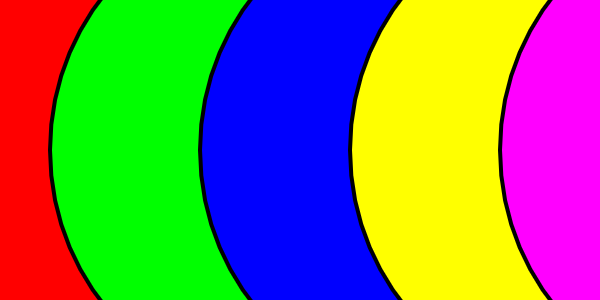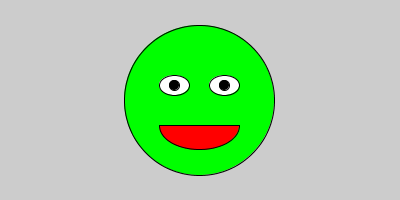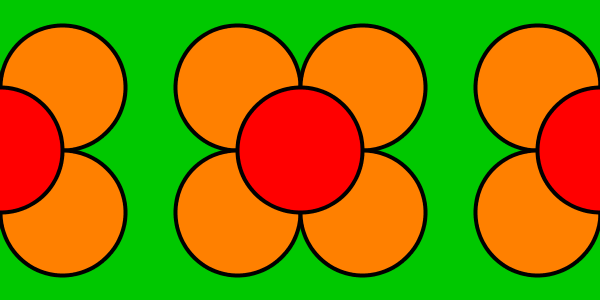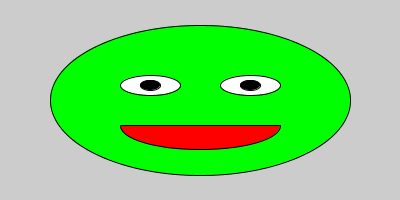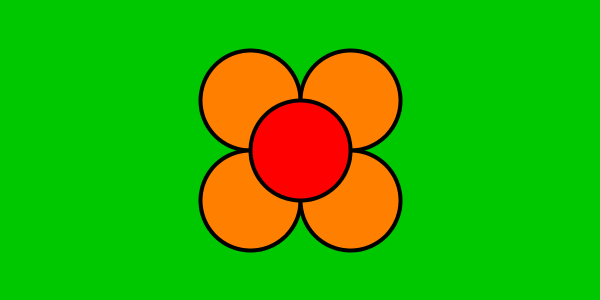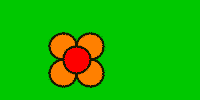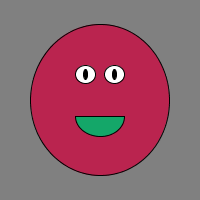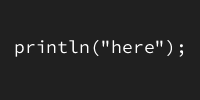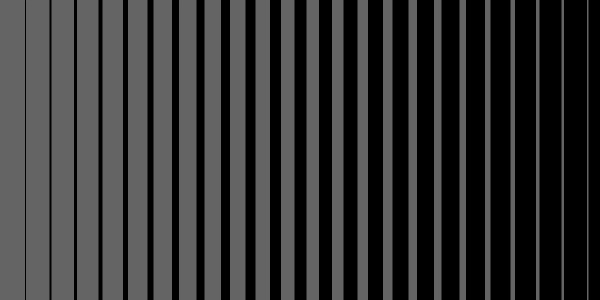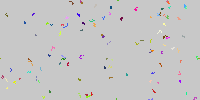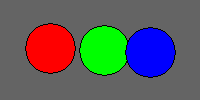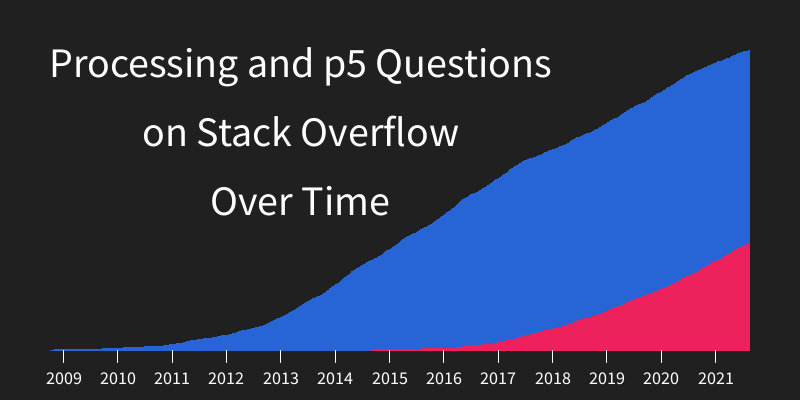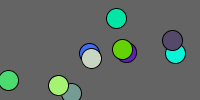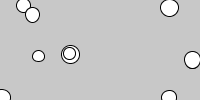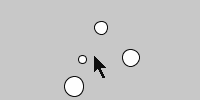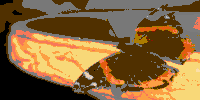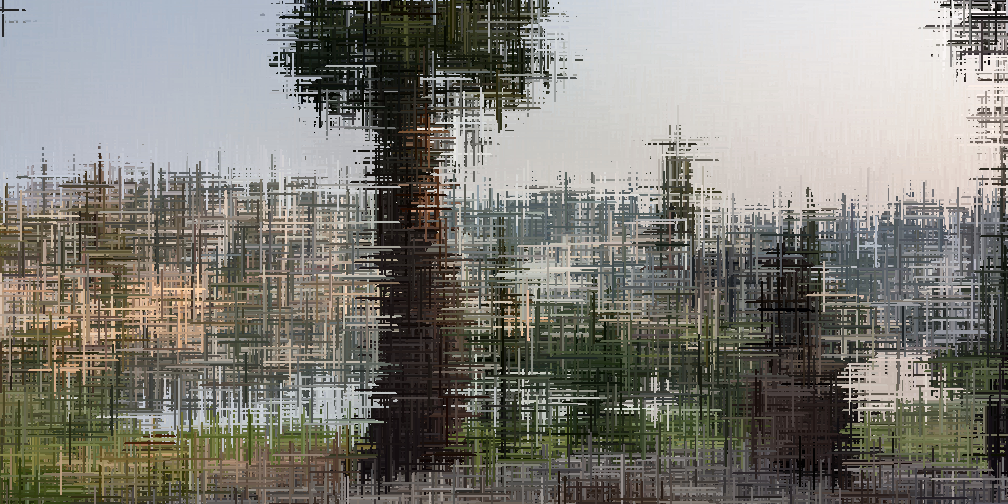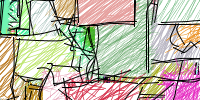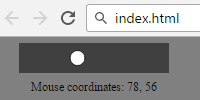Random Walker
Random Walker
A random walker is a simple idea: start at some point, and then every frame, move in a random direction. As time goes on, you’ll randomly walk all around the screen. You can think of this like randomly scribbling on a piece of paper.
This might sound simple (and it is), but it’s also useful in all kinds of applications and explores the idea of emergence: the process of complicated (and sometimes beautiful) patterns emerging from simple rules.
I could babble all day about emergence (the random walker is one of my favorite algorithms), so let’s just get to the code:
float x;
float y;
void setup() {
size(200, 100);
//start in middle of screen
x = width/2;
y = height/2;
//gray background
background(200);
//make the simulation faster
frameRate(1000);
}
void draw() {
stroke(0);
//randomly move
x += random(-1, 1);
y += random(-1, 1);
//prevent going off left or right
if(x < 0){
x = width;
}
if(x > width){
x = 0;
}
//prevent going off top or bottom
if(y < 0){
y = height;
}
if(y > height){
y = 0;
}
//draw the point
point(x, y);
}
This code does what we described above: starts a point in the middle of the screen, randomly moves that point every frame, and then just draws the point.

See the Pen by Happy Coding (@KevinWorkman) on CodePen.
From here we could expand our code to include another random walker:
float blackX;
float blackY;
float whiteX;
float whiteY;
void setup() {
size(200, 100);
blackX = width*.25;
blackY = height/2;
whiteX = width*.75;
whiteY = height/2;
background(128);
frameRate(1000);
}
void draw() {
stroke(0);
blackX += random(-1, 1);
blackY += random(-1, 1);
if(blackX < 0){
blackX = width;
}
if(blackX > width){
blackX = 0;
}
if(blackY < 0){
blackY = height;
}
if(blackY > height){
blackY = 0;
}
point(blackX, blackY);
stroke(255);
whiteX += random(-1, 1);
whiteY += random(-1, 1);
if(whiteX < 0){
whiteX = width;
}
if(whiteX > width){
whiteX = 0;
}
if(whiteY < 0){
whiteY = height;
}
if(whiteY > height){
whiteY = 0;
}
point(whiteX, whiteY);
}
This program adds another set of variables and does the exact same logic.

See the Pen by Happy Coding (@KevinWorkman) on CodePen.
Or we could go back to a single walker, but add random(-1, 1) to the value we pass into the stroke() function. In other words, we could walk the color as well as the position.
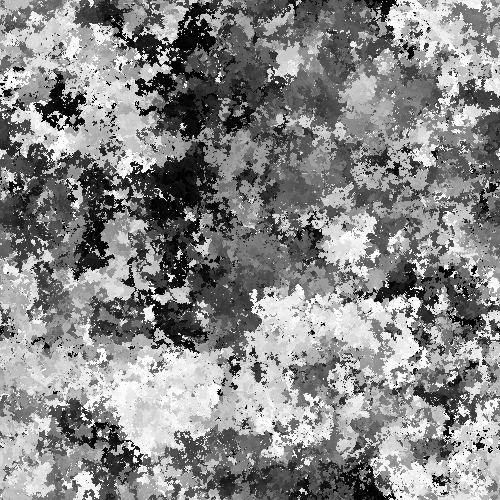
Or we could do the same thing to the red, green, and blue parameters:

Tweak Ideas
- Base the random movement off of a heading (an angle) that you randomly change. This will result in smoother movement.
- Add more random walkers: maybe one for each color of the rainbow, or maybe different walkers with different speeds.


